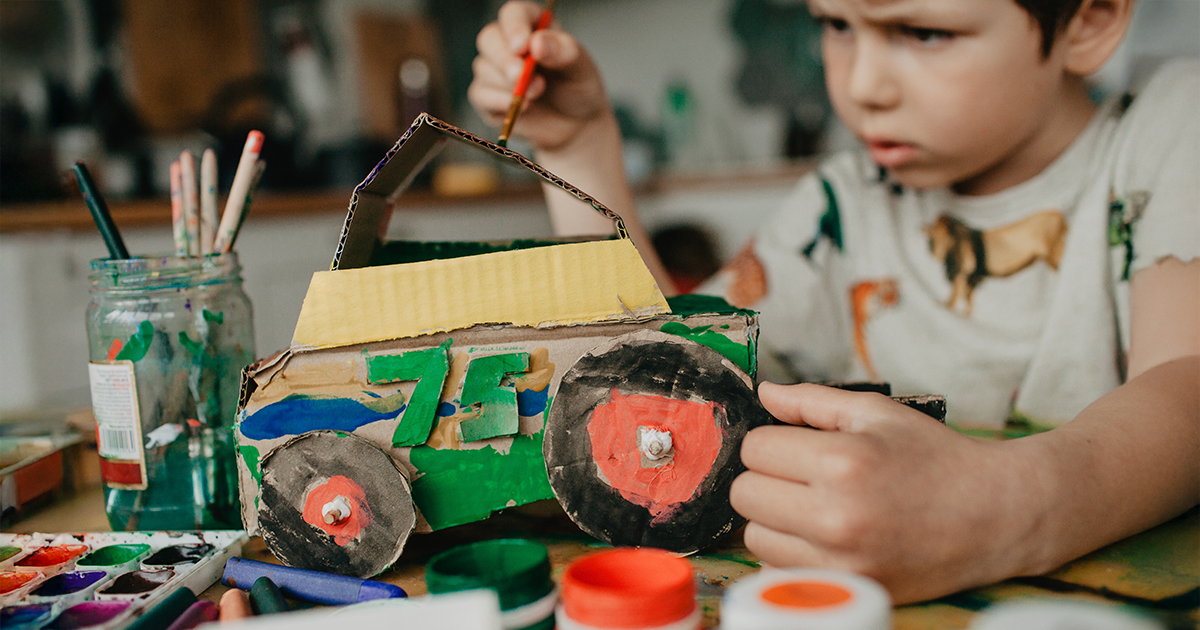Hyundai Motorstudio Senayan Park
Hyundai Motorstudio Senayan Park
Newsroom
The official news from Hyundai Motorstudio Senayan Park and a collection of innovative articles on mobility and sustainability here.
-
Children's Creativity: Upcycling Used Goods into Toys and Decorations
- Hyundai Motorstudio Senayan Park Senayan Park 2025.09.12
-
In the context of the global environmental crisis, waste management is one of the crucial issues that must be addressed immediately. One effective and educational approach is upcycling, which is the process of turning used goods into new products with a higher use value without going through a conventional recycling process. Upcycling not only reduces waste, but also increases awareness and creativity, especially in children.
Integrating upcycling into children's activities provides two main benefits: honing creativity while instilling the value of sustainability from an early age. This article will outline how upcycling can be done easily, the supporting activities that involve families, and its positive impact on children's development and the environment.
The Concept of Upcycling and Its Relevance for Children
Upcycling is different from recycling, which usually requires the process of processing materials into new raw materials. Upcycling is simpler and more direct, turning used goods into new products that have different functions or higher aesthetic value. An example is turning plastic bottles into plant pots or used cardboard into educational toys.
For children, upcycling is a concrete and fun learning medium. This activity teaches the concept of sustainability in a practical way, showing that goods that are considered waste still have great potential if managed creatively. Thus, upcycling is an effective means to foster environmental awareness and creativity simultaneously.
Creative Tutorial on Making Toys and Decorations from Used Items
Here are some examples of upcycling projects that children can do with their families, complete with step-by-step explanations and educational benefits.
1. Used Cardboard Toys
- Material: Used cardboard, scissors, glue, watercolor or color marker, used bottle caps for wheels.
- Process: Cut the cardboard to the shape of the car body, attach the bottle cap as a wheel, and then decorate it with paint or markers.
- Benefits: Fine motor training, shape and color recognition, and understanding of vehicle functions.
2. Pencil Holder from Used Cans
- Material: Used cans, flannel fabric or color paper, glue, decorative tape.
- Process: Clean the can, cover it with cloth or paper, add ribbon as decoration.
- Benefits: Reduces canned waste, teaches the function and aesthetics of everyday objects.
3. Wall Decoration from Plastic Bottle Caps
- Material: Colorful plastic bottle caps, glue shots, carton boards.
- Process: Arrange the bottle caps to form a pattern or picture on a carton, stick them with glue.
- Benefits: Train children's patterns, colors, and visual creativity.
4. Plant Pots from Plastic Bottles
- Material: Used plastic bottles, paint, soil, plant seedlings.
- Process: Cut the bottle, paint the outside, fill it with soil and plant the seedlings.
- Benefits: Education about the life cycle of plants and the importance of greening.
Upcycling Activities as a Means of Family Learning
Upcycling is not only an individual activity for children, but also an opportunity to strengthen family relationships and build an eco-friendly culture at home. Here are some strategies to support this activity:
- Facilitation of Creative Spaces: Prepare a special area at home to work with used materials.
- Involve All Family Members: Encourage the participation of fathers, mothers, and siblings to collaborate on upcycling projects.
- Create a Regular Schedule: Set a specific time, such as weekends, for creative activities together.
- Use Digital Media: Make use of video tutorials or educational apps for inspiration and guidance.
- Celebrate Your Works: Create a small exhibition or documentation of children's works as a form of appreciation and motivation.
The Positive Impact of Upcycling on Children and the Environment
Creativity and Skills Development
Upcycling trains children to think creatively and problem-solving, as they have to find new ways to use used items. This activity also hone fine motor skills and eye-hand coordination through the process of cutting, gluing, and painting.
Environmental Awareness and Social Responsibility
Through upcycling, children learn that waste is not just waste, but a resource that is still valuable. This understanding fosters a sense of responsibility for the environment and encourages sustainable behavior.
Waste Reduction and Resource Conservation
Each used item that is converted into a new product reduces the volume of waste that must be processed or disposed of. This directly helps reduce pollution and pressure on natural resources.
Building a Sustainable Culture
Upcycling habits formed early on can develop into an environmentally conscious lifestyle, which is essential for the sustainability of the planet and the well-being of society.
Challenges and Solutions in Teaching Upcycling to Children
Challenge
- Material and Tool Limitations: Not all families have easy access to used materials or child-safe tools.
- Children's Diverse Interests: Not all children have the same interest in handicraft activities.
- Lack of Parental Time and Support: Parents' busy schedules can limit the time to accompany children.
Solution
- Finding Materials from the Surrounding Environment: Teach children to collect used materials from the home and the surrounding environment.
- Variety of Activities: Provide various types of upcycling projects so that children can choose according to their interests.
- Make Uses of Educational Media: Use video tutorials and engaging apps to motivate children.
- Engage Community: Participate in workshops or creative communities for support and inspiration.
Children's creative upcycling is an effective approach to combine environmental education with creativity development. This activity not only reduces waste, but also forms the character of children who care and are responsible for the earth.
With the support of family and community, upcycling can be a part of a sustainable lifestyle that is fun and meaningful. Through this creative process, children learn that the small changes they make have a big impact on the environment and the future.




